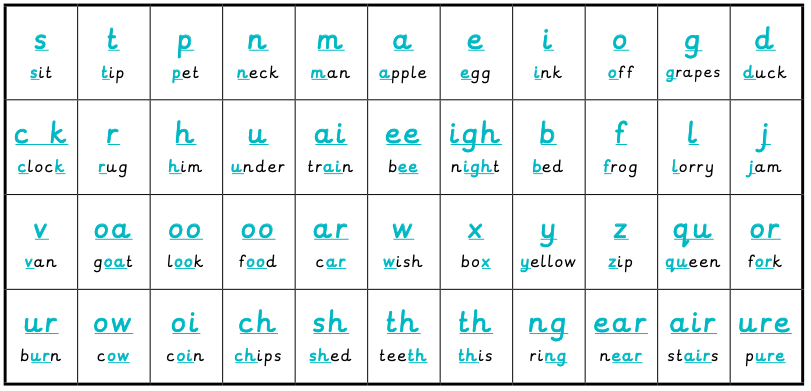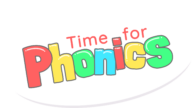You will probably have heard the word “phonics” used when talking about the way that children learn to read. When you were a child, it’s possible that you were taught to read through learning by sight, looking at the shape of the word as a whole, and you didn’t have access to free online phonics games.
These days, children are encouraged to break down the individual sounds in words in order to “decode” them and work out what they are.They may also be pronounced in a different way than you are familiar with, as children are taught to only say the very smallest unit of sound, so for example, the letter ‘m’ is pronounced ‘mmmm’ instead of ‘muh’. In summary, phonics can be described as a way to teach children to learn to read (and write) by helping them to hear and identify the sounds that make up words.
Here are some of the key aspects you’ll need to know to help children with their phonics learning.
What is a Phoneme?
Phonemes can be explained as the smallest unit of sound in a word. These can be:
- Single sounds such as r, m, n.
- Digraphs (this means two letters ina sound) such as ch, sh, oo.
- Trigraphs (this means three letters in a sound) such as igh, ear or air.
- Split digraphs (sometimes called split vowels).
What are split digraphs?
Split digraphs are made up of two letters that are “split” by having another letter in the middle of them. For example a_e in “game” or i_e in “tide”. You may know this as ‘magic e’, although that’s not how it is generally taught or referred to now. In these words, the “e” at the end of the words acts to extend the vowel sound – making it sound different to how it would sound if the “e” wasn’t present. You can see the split digraphs in our phase 5 online phonics games.
How many phonemes are there in the English language?
The English language has 44 phonemes. Over the course of Reception and Year 1, children are taught to read and write each phoneme, forming them accurately. The 44 phonemes are as follows:

Remember that we said the phonemes are often pronounced in a way you aren’t familiar with? Take a look at our quick guide for pronouncing each phoneme above. If you are still unsure, there are lots of brilliant pronunciation videos on YouTube – we recommend “Phonics: How to pronounce pure sounds” by Oxford Owl.
Children also need to know the names of letters, as pronounced in the alphabet, and their alphabetical order. The letter names and letter sounds can be talked about alongside each other, but it is important that you don’t just refer to the alphabetical name of the letter.
What are graphemes?
Graphemes are the written symbols that represent the letter sounds (the phonemes). They can be a single letter or a group of letters. There are often multiple ways to write each phoneme (multiple graphemes for each phoneme), for example the phoneme ‘ay’ as in ‘play’ can be written as ‘ai’, ‘a’, ‘a-e’, ‘ei’ and ‘ey’, depending on the word you are writing. These different ways to write each sound will be explored in more detail as children near the end of the Reception year and throughout Year 1.
What is blending in phonics?
Blending is when children use their knowledge of phonemes to read words, saying the sounds in quick succession to hear the word.
For example:
- c-a-t = cat
- g-oa-t = goat
- sh-ee-p = sheep
Remember that children can practise their blending skills of CVC words in our free phase 2 online phonics games.
What is segmenting?
Segmenting is the opposite to blending and is when we break down a word in order to write it, according to the sounds we hear in that word. Children will use segmenting skills, as well as their knowledge of phonemes to spell out and help them to write words. For example they might identify all the phonemes in c-a-t to help them write it down.
Fancy trying out our free interactive phonics games? Sign up here!



